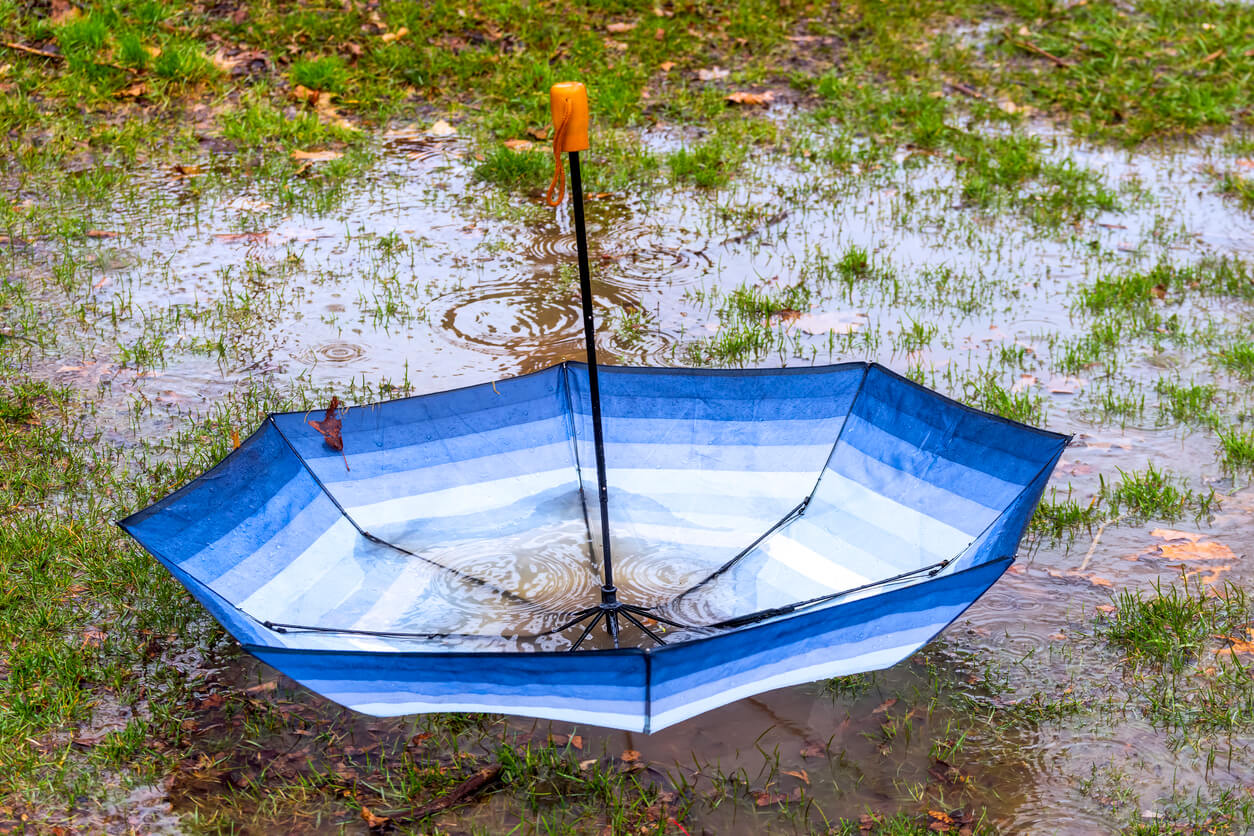While the summer and fall of 2018 are long over, their unusual weather will undoubtedly impact lawns well into the spring of 2019 and beyond. The middle and late summer of 2018 was very hot, setting records in many New England states, especially during August. This high heat was followed by above average rain in in the fall, particularly in October. If you lawn survived the summer heat, the one-two punch of a wet October likely placed it in a stressful situation entering the winter making it more susceptible to winter damage.
So what impact does this type of weather have on your lawn? To answer this question, we must first understand how grass is affected by high heat and excessive water as it relates to plant and soil science.
High Heat
Like people, plants need to breathe. During transpiration, as water leaves the grass blades there is a cooling effect, much like sweating. To do this successfully, there needs to be adequate soil moisture, sufficient energy reserves in the roots, and soil/air temperatures below 85°.
During the day, the plants transpire and help cool themselves using energy and water from the root system. Normally during cooler nights, this process shuts down – saving valuable sugar, water, and energy reserves for the following day. Unfortunately, with extreme soil temperatures the plants could not shut down the cooling process of transpiration during the night. This resulted in the loss of valuable energy reserves leading to a deficit as days turned into weeks, much like a battery being used and never recharged.
Depending upon the initial health of the root system and energy reserves entering the summer, plants would begin to not only brown out, but die as a result of simply starving. If this was not enough, the rains that came weeks later further compounded the problem.
Heavy Rain
To explain the effects of heavy rain on your lawn, we must briefly discuss the soil below your carpet of green or brown, depending upon how your grass faired during August. Soil is made up of three primary parts: air, water, and the physical soil particles themselves. Ideally, these components should each be one-third of the whole, depending upon the type of soil you have with sand having more air and clay having less air.
The air component is very important because grass roots must “breathe” below ground. When periods of rain occur beyond normal parameters, the air pocket becomes smaller as the water saturates the soil. At some point all air space is depleted, literally drowning the root system, resulting in decline and even death.
Think Proactively for 2019
Despite having gone through three difficult seasons, if the spring weather gods are good to lawns (early snow melt, warming temperatures and normal rainfall), your spring lawn may not need any additional attention beyond a normal lawn program. However, if we have a late snowmelt combined with cold and too wet or too dry weather, then your lawn is likely to need extra help to recover and prepare for another summer. Services that focus on restoring soil health are crucial, including aeration/overseeding, Chippers’ new stress-reduction spray (containing amino acids), compost tea, and seaweed.
For Chippers new clients, we will be recommending a series of beneficial treatments after an onsite evaluation to determine the best course of action. To proactively help their lawns in 2019, our existing clients may see additional recommended services in their winter contracts based on past history and service notes.


